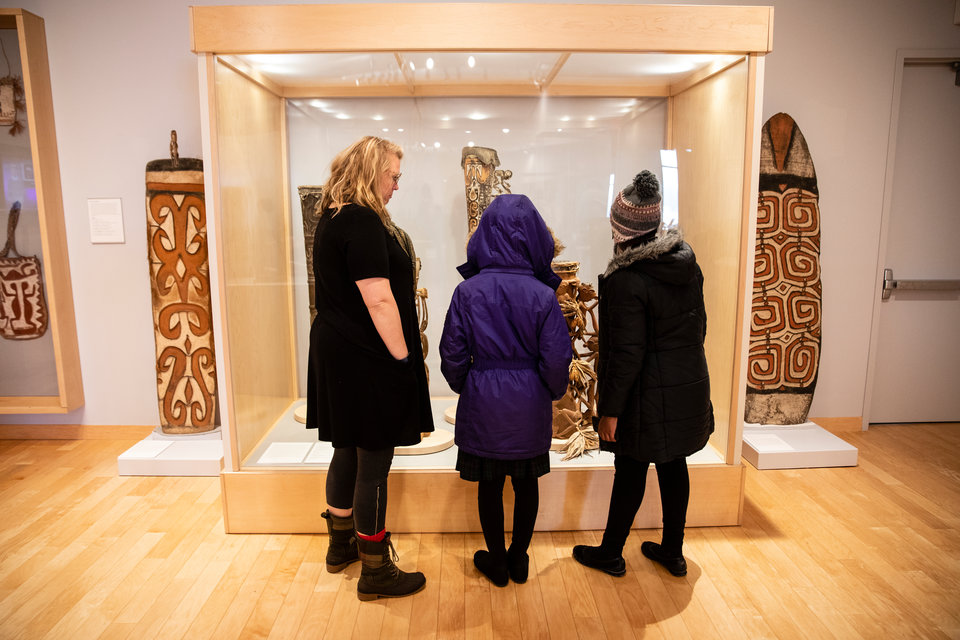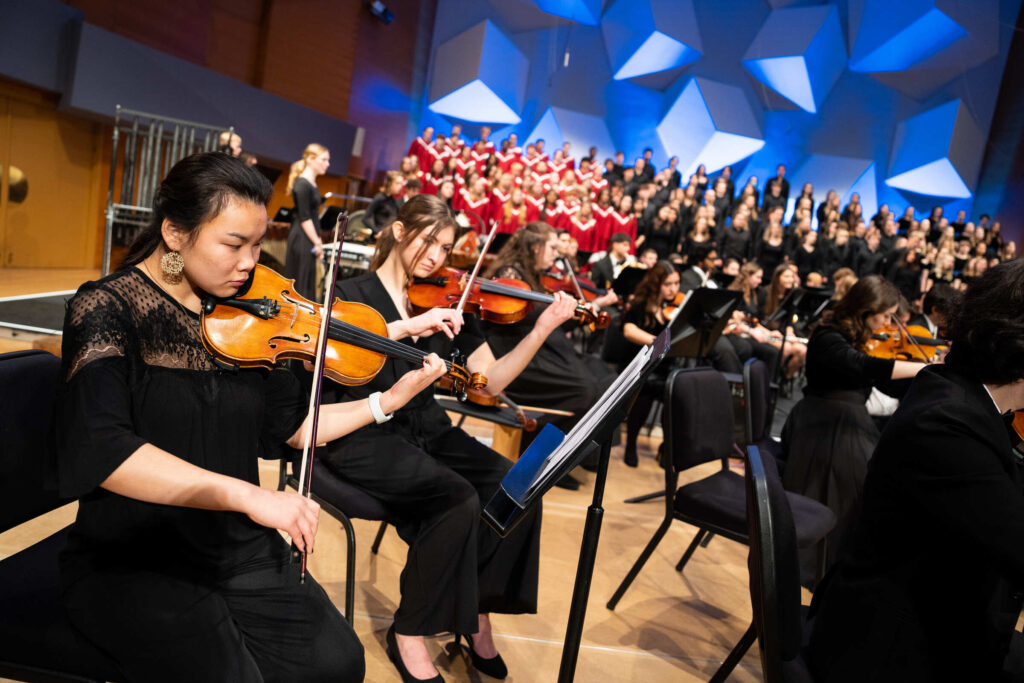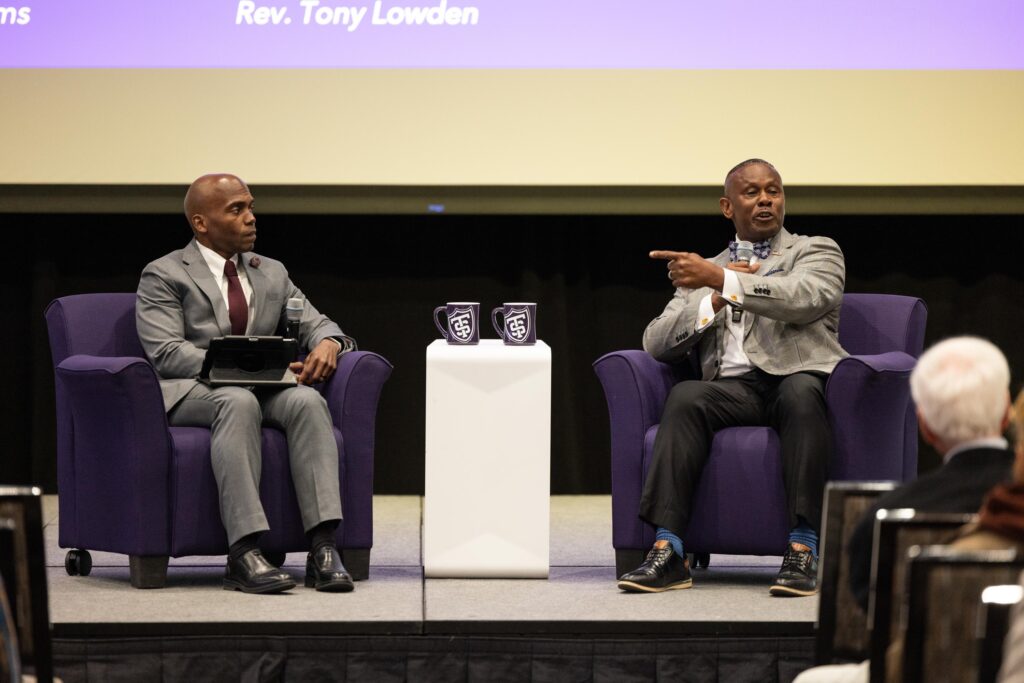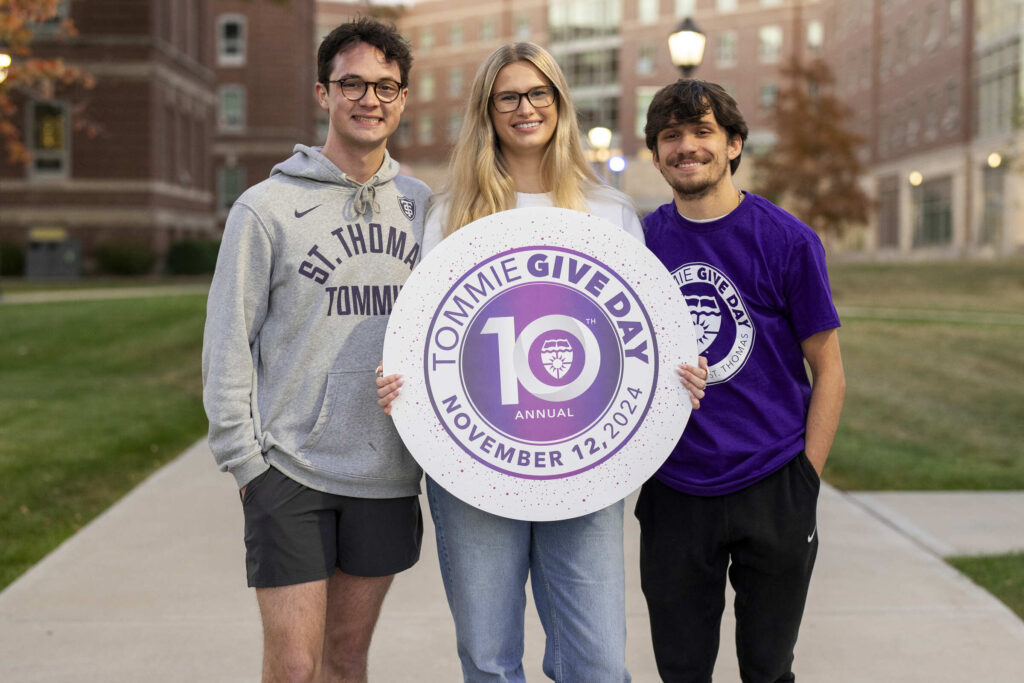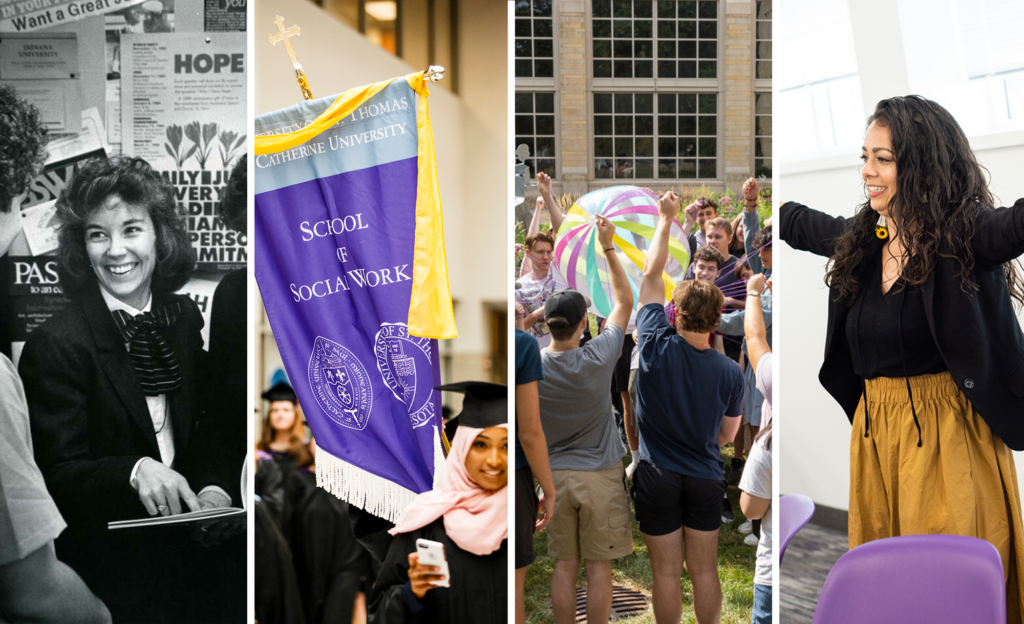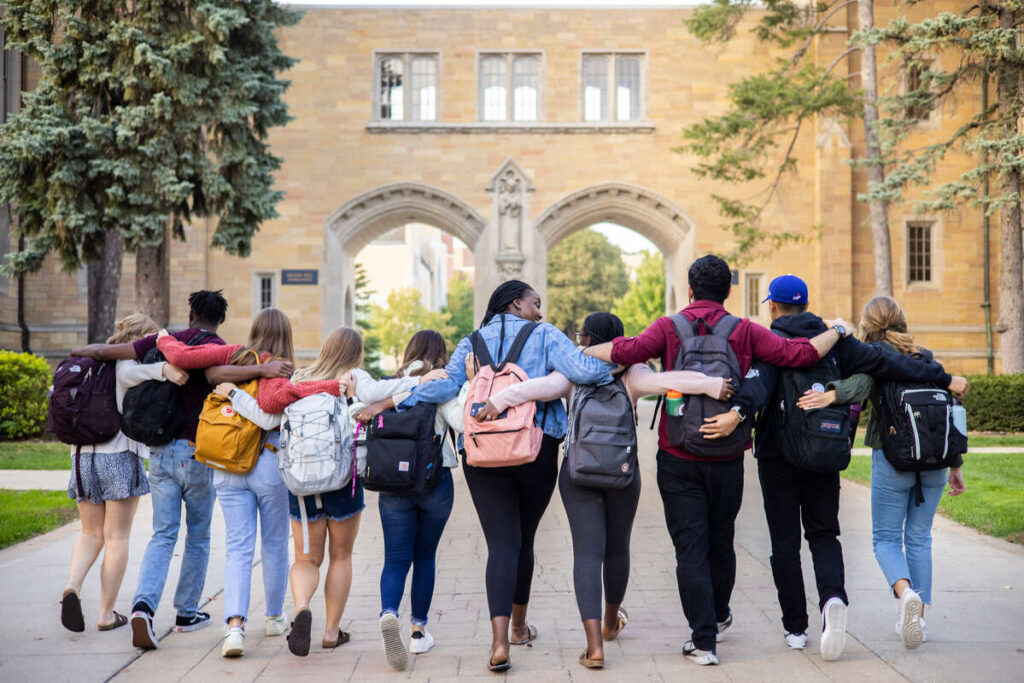As part of the SOLV Initiative, Bringing Asmat to the Classroom and Beyond: Educating With the Collection of the American Museum of Asmat Art (AMAA) is led by St. Thomas faculty and students from across disciplines who are focused on engaging the community with art from the American Museum of Asmat Art.
In an initial collaboration with St. Peter Claver Catholic School (SPC) in St. Paul’s Rondo neighborhood, faculty and students connected with elementary school children through art pieces from the AMAA and created original lesson plans to help teach students about the Asmat art and culture. Through the objects, students learned about the Asmat people including their ecological challenges and cultural identity.
“This project works on a number of different levels,” said Gretchen Burau, an art history adjunct instructor. “It began at St. Thomas with art history, education and geography students producing comprehensive lessons on Asmat art and culture for elementary students at our community partner school, SPC. This was done through a collaborative effort that allowed SPC students to receive instruction tailored to fit their school’s educational philosophies while meeting the needs of individual grade levels.”
Burau said similar lessons on Asmat art are planned for Saint Paul Public Schools and eventually – as they are made available on the AMAA website – national and potentially international audiences.

Students from St. Peter Claver Catholic School tour the American Museum of Asmat Art in the Anderson Student Center.
The team consists of College of Arts and Sciences and School of Education faculty including Burau; Victoria Young, art history professor and chair; Amy Mickelson, art history adjunct instructor; Muffet Trout, teacher education associate professor; David Kelley, geography and environmental studies associate professor; and students from across disciplines including art history, geography and education.
“It was truly amazing to see how students from these departments combined their strengths and took input from peers to create a curriculum for SPC students,” Burau said. “During this process, art history students provided content for the education students to use as they developed age-appropriate lessons. At the same time, geography students made a story map that functioned as a visual aid in the classroom and helped SPC students understand Asmat in terms of the environment and geographic location. The interdisciplinary nature of this project ensured that factual information was being presented and lessons were properly scaffolded while fitting Minnesota state standards for history, geography and art. Without the dedication of these students and their willingness to collaborate, our work at SPC would have been lacking.”
Trout also said one of the highlights of the project has been its interdisciplinary nature.
“All partners depended upon one another and valued others' contributions in bringing the project to fruition,” she said. “In particular, as a professor in the Department of Teacher Education, I enjoyed seeing others appreciate the skills education students brought to the design and teaching stages of the project.”
Currently, the team is going beyond the classroom for the second phase of the project that includes adding images and related information on select pieces from the AMAA collection to the museum’s website. Then in June, more than 50 pieces of Asmat art will be on display at the Minneapolis-St. Paul International Airport’s Thomson Reuters Concourse C Art Gallery through October.
“It is my hope that we’ll continue to move our Asmat art collection into area schools, have field trips to come to the AMAA gallery on campus, and provide tools online for schools beyond the immediate metro to learn more about the Asmat people and their culture,” Young said. “I also look forward to creating traveling exhibitions of our collection to share at venues across the United States in the coming years.”
Art history graduate student Bridget Gallagher-Larkin said it was exciting to coach undergraduate students on writing a curriculum. With a background as an elementary school teacher, she said the work with SPC was a great starting point for the project.
“This has been a very valuable experience for me,” Gallagher-Larkin said. “Coaching, taking lead in the classroom. Creating material that will be live on the website and installing some of the art in the Minneapolis airport, too. It will be interesting to see how this keeps evolving.”
